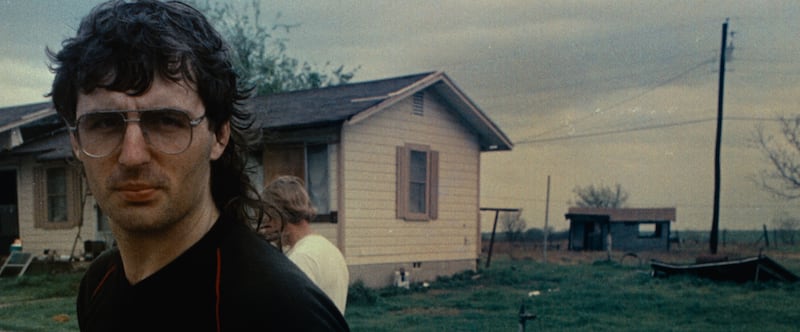A recurring grumble about Netflix documentaries is that they’re much too long. That was true of The Disappearance of Madeleine McCann, which found space in its six hours plus run-time for a potted history of the Algarve. And of Sophie: A Murder In West Cork, where a gruesome story was subjected to shameless padding. But the opposite is the case with Waco: American Apocalypse (Netflix from Wednesday), which displays a refreshing succinctness as it chronicles the catastrophic March 1993 confrontation between the FBI and David Koresh’s Branch Davidian cult at the sect’s Mount Carmel complex in central Texas.
There have been several films about Waco and Koresh, the manipulative leader of the Branch Davidians. With American Apocalypse, director Tiller Russell dips the spotlight so that it no longer points straight at the guru with a literal messiah complex. Koresh’s unlikely journey from small-town dropout to abusive manipulator is briefly recounted in episode two. However, the real focus is the 51-day Mount Carmel siege and the FBI errors that contributed to 82 deaths.
It makes for grippingly granular viewing. The three-part series, which marks Waco’s 30th anniversary, is, among other things, a portrait of institutional dysfunction. There are a lot of institutions and a great deal of dysfunction, with jostling between the FBI, the Bureau of Alcohol, Tobacco, Firearms and Explosive (the ATF) and the Federal Government causing a potentially containable situation to spiral out of control.
Russell is careful not to exonerate Koresh. He was a monster, who convinced the Davidians – an obscure breakaway of the Seventh-Day Adventists – that he was the risen Lord.
‘We were viewed as the weirdos’: Doireann Ní Ghlacáin on growing up in an Irish-speaking family
RTÉ’s twisty new soap opera stars Ray D’Arcy and, now, Brendan Courtney
‘In the loneliest country in Europe, I’ve started chatting to strangers’
A look inside the Canadian ambassador’s home: ‘This would be a temple in Canada’
He also claimed that he could bestow his divine blessing by sleeping with the women in his flock. Husbands, by contrast, were forbidden physical relationships with their wives. There is strong evidence, moreover, of Koresh abusing children. Heather Jones, the last child to leave the compound before the FBI went in, describes how he would take her aside for “punishment”. “I was being groomed,” she says.
Just as unsettling is the testimony of acolytes who to this day believe Koresh did no wrong. Kathy Schroeder says it was an honour to be selected to sleep with Koresh at the end of one of his all-night bible study sessions. “It was exciting to be alone with God,” she says. She remembers planning to kill herself in the event of the authorities breaching the compound.
“If [the FBI] had entered the building, we would all commit suicide,” she says. “There was an actual grenade handed to me because I was the one woman that could have pulled that pin and killed the four or five women in the room that I was in. It wasn’t a matter of, ‘How is this affecting me as a person?’ because, I’m not a person, I’m God’s tool.”

American Apocalypse tells the story of the siege minute by minute – from the ATF raid in which four officers were killed to the fires that engulfed the building as the Feds flooded it with tear gas (Koresh’s followers deny starting the blazes). One way or another, it feels inevitable that the siege would end in disaster. Death and mayhem certainly seem to have been Koresh’s desired outcome. The question that lingers is whether more lives might have been saved.
Perhaps, says FBI rescue sniper Chris Whitcomb, who recalls having Koresh in his sights early in the stand-off. “If I shoot him here, now, it’s over. They all come out. I’ll go to jail for the rest of my life, but I save 90 lives. ... Do I think about it a lot? Hell, yeah.”

















